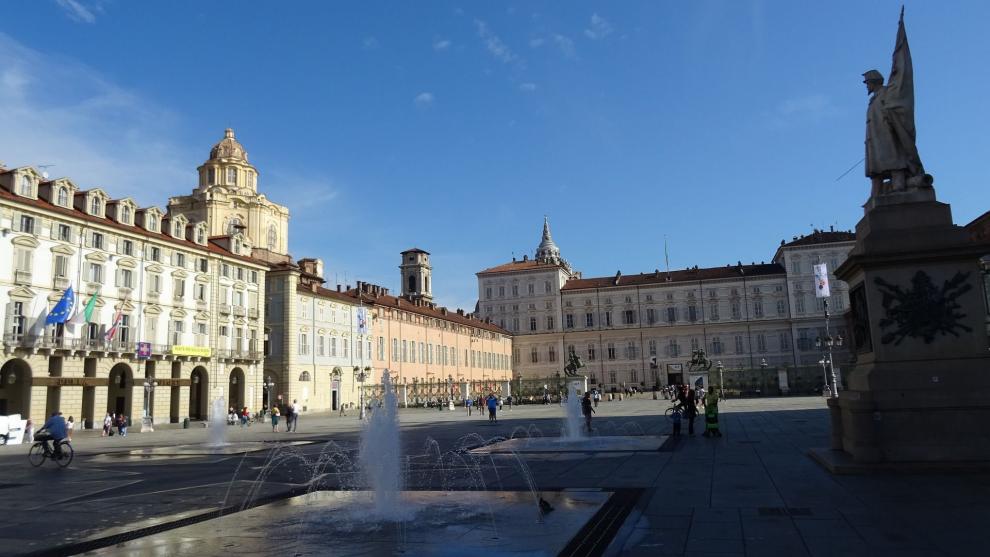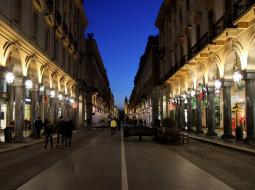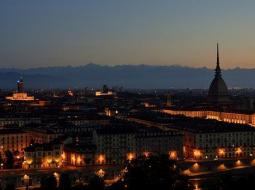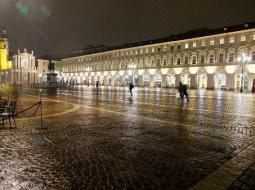Thessaloniki gets ready for its metro launch in November
The underground rapid transit lines have been under construction for almost two decades due to various project delays
 TheMayor.EU logo
TheMayor.EU logo 
Whether the ancient city of Taurisia began as a Celtic or Ligurian settlement is unknown: it was destroyed by Hannibal in 218 BC. The Roman colony of Augusta Taurinorum was established almost two centuries later. In succeeding years, Goths, Lombards and Franks tramped through the city. In 1563 the Savoys abandoned their old capital of Chambéry (now in France) to set up court in Turin, which shared the dynasty’s fortunes thereafter. The Savoys annexed Sardinia in 1720, but Napoleon virtually put an end to their power when he occupied Turin in 1798. Turin was occupied by Austria and Russia before Vittorio Emanuele I restored the House of Savoy and re-entered Turin in 1814. Nevertheless, Austria remained the true power throughout northern Italy until the Risorgimento (literally ‘the Resurgence’, referring to Italian unification) in 1861, when Turin became the nation’s inaugural capital. Its capital status lasted only until 1864, and the parliament had already moved to Florence by the time full-size chambers were completed.
Turin adapted quickly to its loss of political significance, becoming a centre for industrial production during the early 20th century. Giants such as Fiat lured hundreds of thousands of impoverished southern Italians to Turin and housed them in vast company-built and owned suburbs. Fiat’s owners, the Agnelli family (who also happen to own the champion Juventus football club, Turin’s local newspaper and a large chunk of the national daily Corriere della Sera), remain one of Italy’s most powerful establishment forces. Fiat’s fortunes declined later in the 20th century, however, and only revived around a decade ago.
The highly successful 2006 Winter Olympics were a turning point for the city. The Olympics not only ushered in a building boom, including a brand-new metro system, but transformed Turin from a staid industrial centre into a vibrant metropolis. Turin was scheduled to again step into the spotlight in 2008, as the European Capital of Design, hosting conferences and exhibitions.
Source: lonelyplanet.com
Turin is a city and an important business and cultural centre in northern Italy. It is the capital city of the Piedmont region, and was the first capital of Italy from 1861 to 1865. The city is located mainly on the western bank of the Po River, in front of Susa Valley, and is surrounded by the western Alpine arch and Superga Hill. The population of the city proper is 878,074 (31 July 2018) while the population of the urban area is estimated at 1.7 million inhabitants (by Eurostat). The Turin metropolitan area is estimated by the OECD to have a population of 2.2 million.
Turin is an important business center in northern Italy. It is s a major automotive and aerospace centre, home to FIAT (Turin Italian Automobiles Factory), part of Fiat Chrysler Automobiles group, the sixth largest automotive company in the world.
Other companies operating in Turin are Maserati, Lancia, Alfa Romeo, Iveco, Pininfarina, Bertone, Sparco, Italdesign Giugiaro, General Motors, New Holland, Comau, Magneti Marelli, Graziano Oerlikon, Ghia, Fioravanti (automotive), Rai (national broadcasting company), Banca Intermobiliare, Intesa Sanpaolo, Reale Mutua (finance), Invicta, Kappa, Superga (fashion), Ferrero, Lavazza, Martini & Rossi (food & beverage), Alpitour (hospitality and tourism).
The city is also well known for its aerospace industry represented by Alenia Aeronautica, Thales Alenia Space and Avio. The International Space Station modules Harmony, Columbus and Tranquility have been constructed here.

Turin's historical architecture is predominantly Baroque and was developed under the Kingdom of Savoy. Nonetheless the main street of the city centre, Via Roma, was built during the Fascist era (from 1931 to 1937) as an example of Italian Rationalism, replacing former buildings already present in this area.
Via Roma runs between Piazza Carlo Felice and Piazza Castello. Buildings on the portion between Piazza Carlo Felice and Piazza San Carlo were designed by rationalist architect Marcello Piacentini. These blocks were built into a reticular system, composed by austere buildings in clear rationalist style.
Source: Wikipedia

Not far from Via Po stands the symbol of Turin, namely the Mole Antonelliana, so named after the architect who built it, Alessandro Antonelli. Construction began in 1863 as a Jewish synagogue. Nowadays it houses the National Museum of Cinema and it is believed to be the tallest museum in the world at 167 metres (548 feet). The building is depicted on the Italian 2-cent coin.
Source: Wikipedia

On the northern edge of Via Roma stands Piazza Castello, regarded as the heart of the city. The half-pedestrianized square features some significant buildings such as Palazzo Reale (Former Savoy Royal House), the Palazzo Madama (which previously housed the Savoy senate and, for few years, the Italian senate after Italian unification), the former Baroque Teatro Regio di Torino (rebuilt in modern style in the 1960s, after being destroyed by fire), the Royal Library of Turin which hosts the Leonardo da Vinci self-portrait, and the baroque Royal Church of San Lorenzo.
Moreover, Piazza Castello hosts a Fascist era building, the Torre Littoria, a sort of skyscraper which was supposed to become the headquarters of the Fascist party, although it never served as such. The building's style is quite different from the Baroque style of Piazza Castello. The square regularly hosts the main open space events of the city, live concerts included.
Address: Palazzo di Città Square №1, 10122 Turin